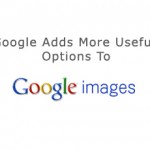 Redmond, Washington — Microsoft Corp., following its 10-year hot on the heels search and advertising pact with Yahoo, the Redmond, Washington, software maker wasted no time before making fresh overtures into becoming a major player in online advertising, serving an estimated 30 percent of the search-based ad market. And, just yesterday, the software giant announced a new collaboration with consumer measurement firm comScore to design a digital media-planning service dubbed as “Reach and Frequency Planner” (RF Planner).
Redmond, Washington — Microsoft Corp., following its 10-year hot on the heels search and advertising pact with Yahoo, the Redmond, Washington, software maker wasted no time before making fresh overtures into becoming a major player in online advertising, serving an estimated 30 percent of the search-based ad market. And, just yesterday, the software giant announced a new collaboration with consumer measurement firm comScore to design a digital media-planning service dubbed as “Reach and Frequency Planner” (RF Planner).
In an attempt to help brand advertisers better measure and track their online ad campaigns, Microsoft in a formal statement said, the RF Planner “would enable brand advertisers to determine and predict reach, frequency and audience composition at the ad placement level. The RF Planner uses a hybrid audience measurement method that combines Microsoft’s ad serving data with demographic information from comScore’s panel.”
Audience measurement will combine ad serving data from Microsoft with demographic information from comScore.
“The perception that traditional branding metrics are not possible or meaningful for digital media is misguided,” said Scott Howe, corporate vice president of the Advertiser and Publisher Solutions group at Microsoft. “We believe online advertising would not maximize its appeal to brand marketers until the basic metrics they have relied on for years are available in digital-media plans. This requires the cooperation of digital publishers and panel measurement organizations, which our collaboration with comScore will accomplish.”

Microsoft and comScore argue that online advertisers have been hindered by the inability to measure digital ad campaigns with the same metrics used for offline campaigns. Ad networks typically only provide reach and frequency numbers for entire sites, not for individual ad campaigns. As a result, ad budgets for brand advertisers account for about two-thirds of the $186 million U.S. ad market, while only 5% of those dollars are spent on Web advertising. So potential brand advertisers do not know if they are throwing money away, or planting their brand in front of a huge new audience.
By teaming Microsoft’s ad data with demographics from comScore’s research, the companies want to provide advertisers with the same tracking information they would have with an offline campaign.
“Brand advertisers need the ability to evaluate reach and frequency by audience composition in ways that are actionable and accountable,” said Gian Fulgoni, comScore co-founder and chairman. “This new hybrid approach to digital media planning offers the granular campaign-level analysis and streamlined planning capabilities upon which brand advertisers have long relied in the traditional media environment.”
“Current online reach and frequency metrics are typically computed at the site level,” Fulgoni stated. “Measuring reach and frequency at the ad placement level is more precise because it shows the reach of the ad campaign that can actually be achieved, the true potential frequency and the specific demos of that audience. Campaigns planned at a total site level can overstate reach and understate frequency, and may not deliver the desired demographic mix. This new hybrid approach to digital media planning offers the granular campaign-level analysis and streamlined planning capabilities upon which brand advertisers have long relied in the traditional media environment.”
Microsoft said closed beta testing of the RF Planner will start immediately, with select unnamed advertisers participating.
This marks the second major deal this week related to Microsoft’s online ad ambitions. On Wednesday, it announced a long-anticipated collaborative search deal with Yahoo.


